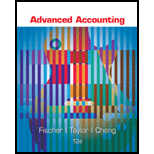
Option:
It represents a right; to trade some quantity of a particular underlying, wither you may buy it or sell it.
If an option allows buying a functional stock or share, it is said to be a call option.
If an option allows selling a functional stock or share, it is said to be a put option
Options represent an agreement between a buyer and seller that provides the owner that he can buy or sell the asset but it does not qualify that he necessarily has to do so. It is the decision of the owner.
Comprehensive Income:
Comprehensive income is basically the sum of net income that should be different from income statement because income has not been realized and consists of unrealized
To calculate:
The balances at both
Want to see the full answer?
Check out a sample textbook solution
Chapter 9 Solutions
Advanced Accounting
- The merchandise inventory of sunny retailer was destroyed by fire on November 20.arrow_forwardHow does operational synchronization enhance period matching? a. Calendar periods work perfectly b. Synchronization wastes effort c. Business cycle alignment improves temporal relationships d. Standard periods fit all MCQarrow_forwardAnswerarrow_forward
 Auditing: A Risk Based-Approach to Conducting a Q...AccountingISBN:9781305080577Author:Karla M Johnstone, Audrey A. Gramling, Larry E. RittenbergPublisher:South-Western College Pub
Auditing: A Risk Based-Approach to Conducting a Q...AccountingISBN:9781305080577Author:Karla M Johnstone, Audrey A. Gramling, Larry E. RittenbergPublisher:South-Western College Pub EBK CONTEMPORARY FINANCIAL MANAGEMENTFinanceISBN:9781337514835Author:MOYERPublisher:CENGAGE LEARNING - CONSIGNMENT
EBK CONTEMPORARY FINANCIAL MANAGEMENTFinanceISBN:9781337514835Author:MOYERPublisher:CENGAGE LEARNING - CONSIGNMENT


